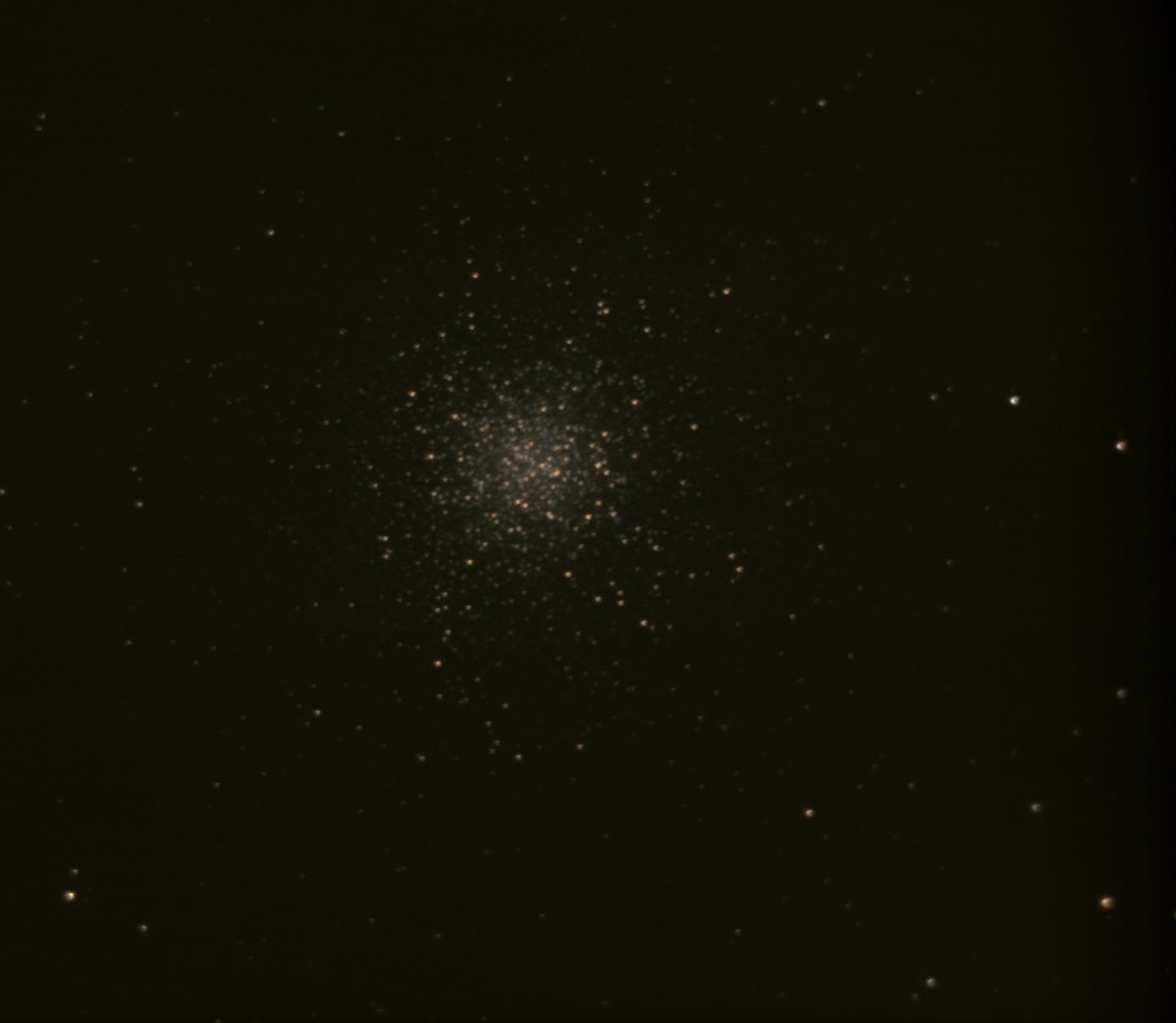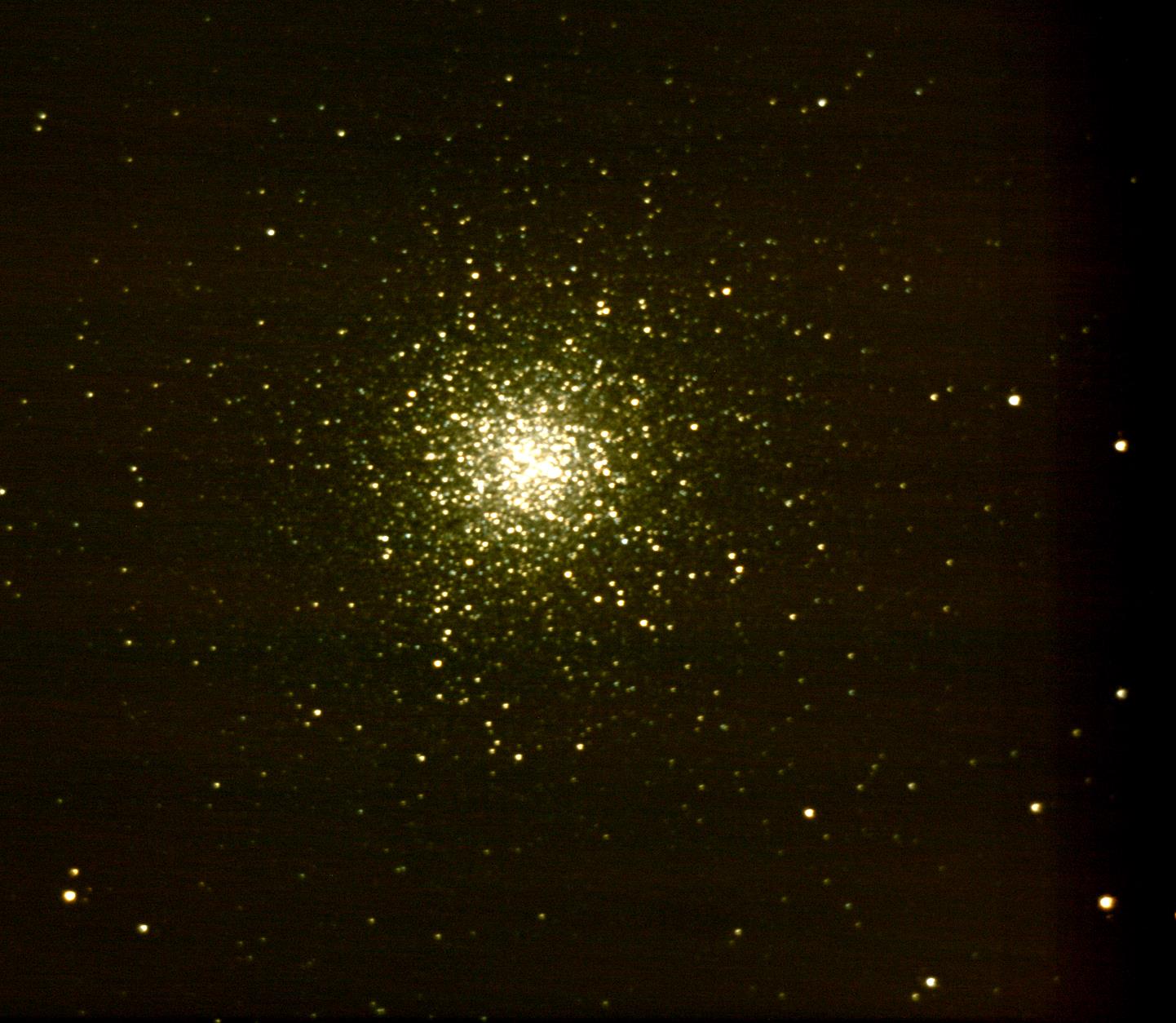
Deep Sky Photography
I am trying my hand at deep sky photography. My first target was the Orion Nebula, of course, but none of my efforts were good enough to keep. I had no idea what I was doing, so there's that.
My second target is M13, the Hercules Cluster, a globular cluster.
I'm having better luck with it.
I am using an old Canon digital DSLR at prime focus. I use Backyard EOS to run the camera.
I use AutoStakert to stack the series of photos
Then I use PhotoShop to "stretch" the stacked photo.
Here is my first try. I converter to to black and white because it wasn't working out in color

Here is my second try. The first one is the stacked image before stretching, the second one is after stretching


Stacking uses several identical photos to reduce the noise ration. All of the photos' data is at the low end of the histogram. Stretching does just that, it stretches that data out toward the center of the histogram. The first one looks a lot like how M13 looks when you look at it through an eyepiece. The second looks kind of how it looks when you use averted vision to look at it.
The center of your retina contains cones, which see detail well, but have limited light collection abilities. The parts of your retina that handle peripheral vision has mostly rod cells. These are more sensitive to light, but don't see things as sharply. The idea is to look away from an object, but still concentrate on the object.